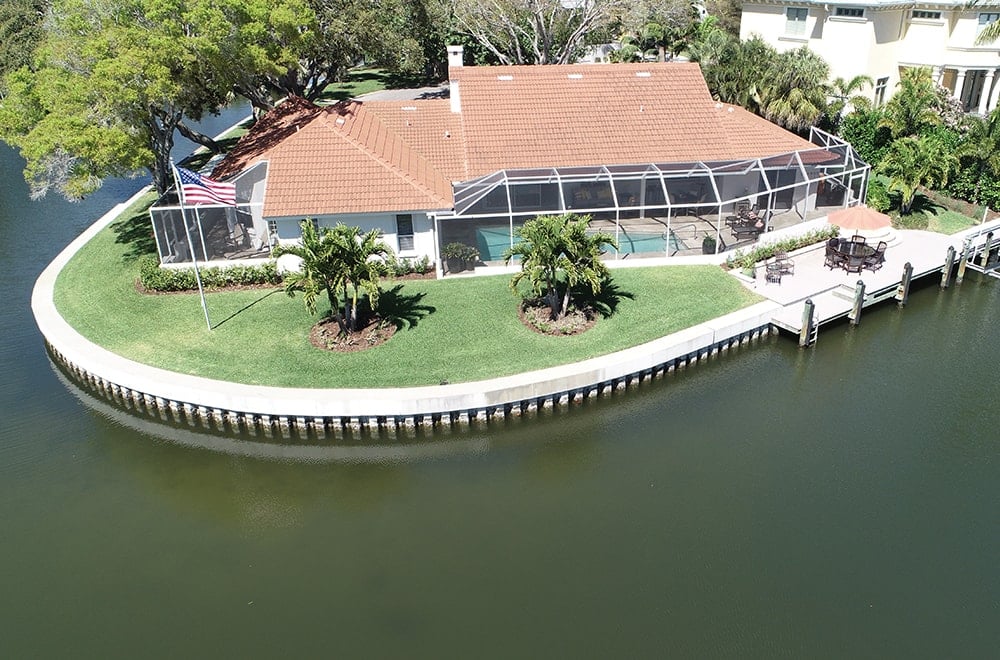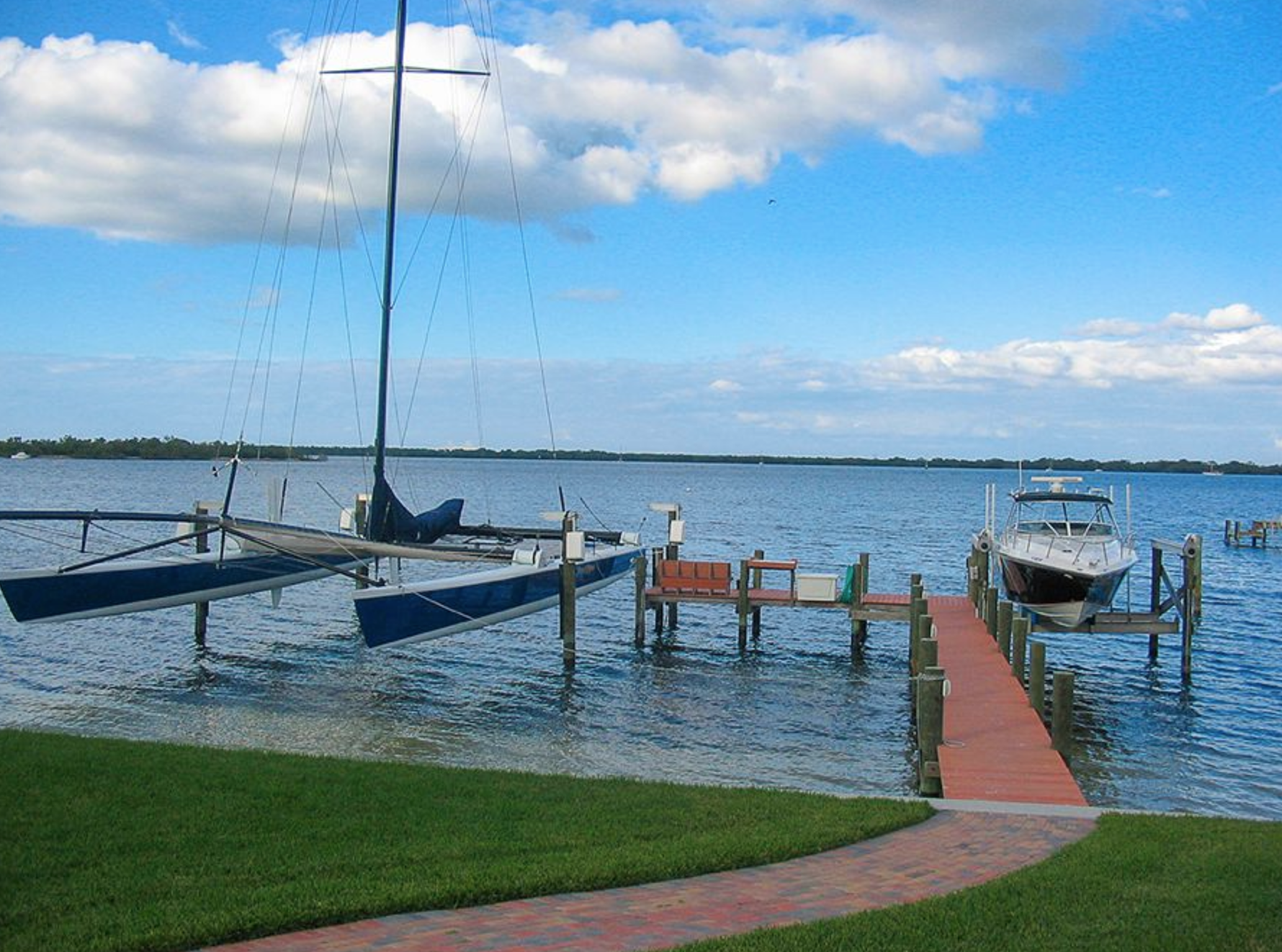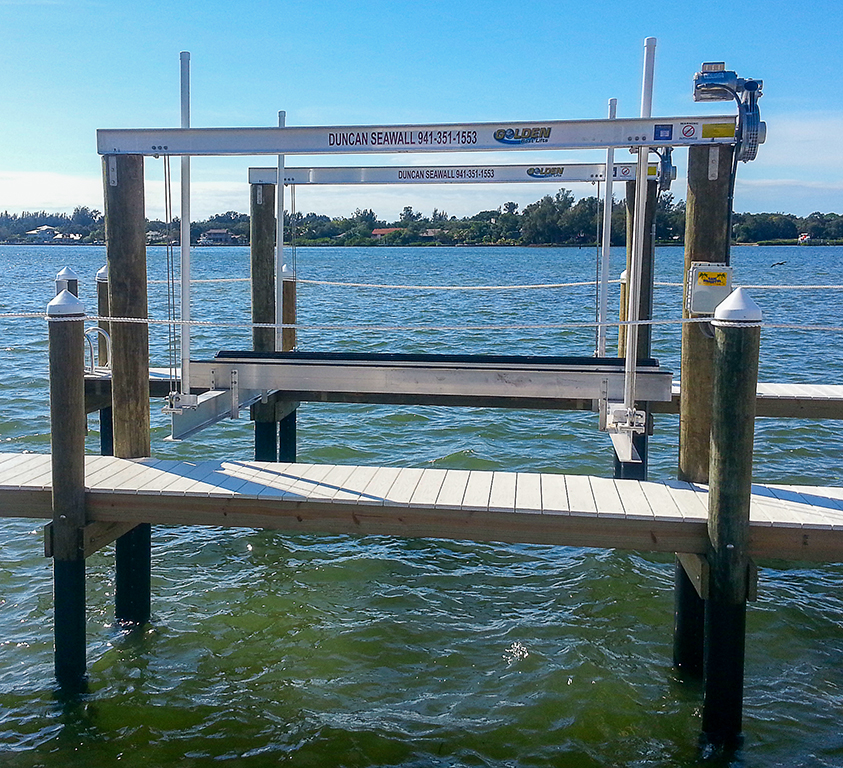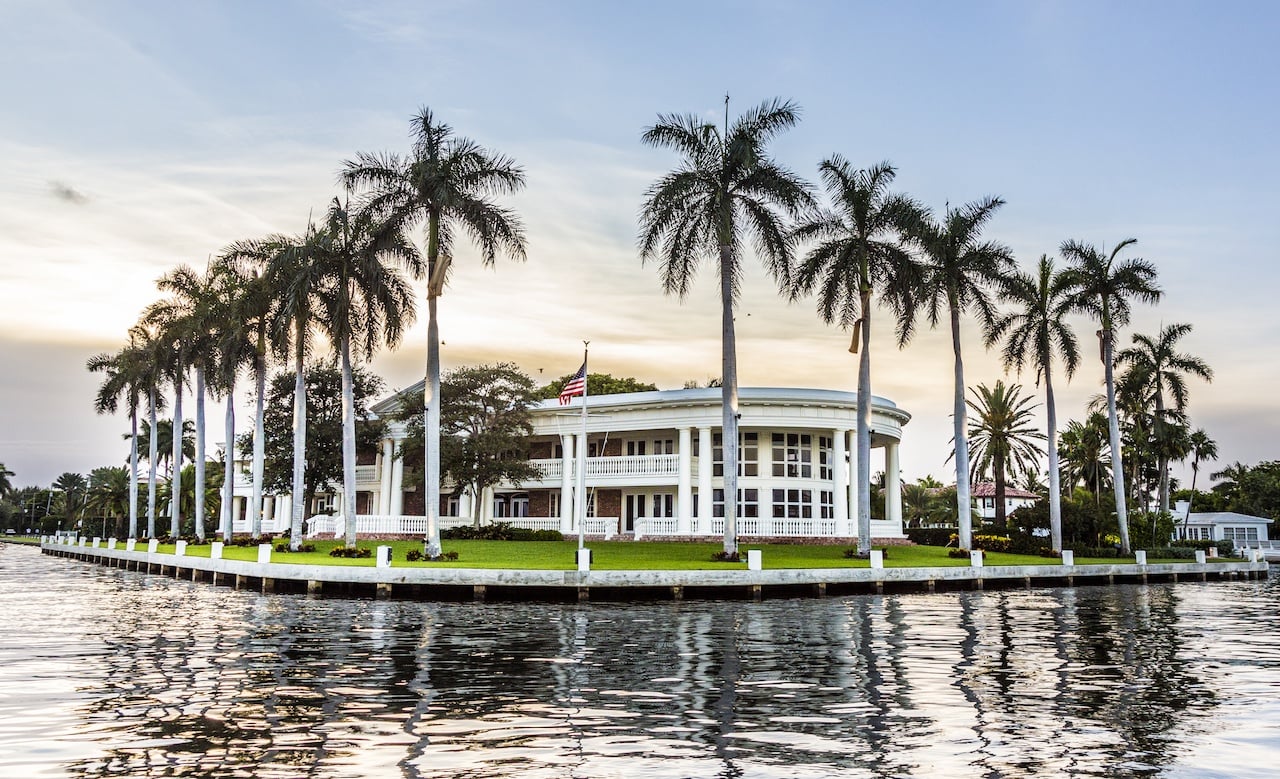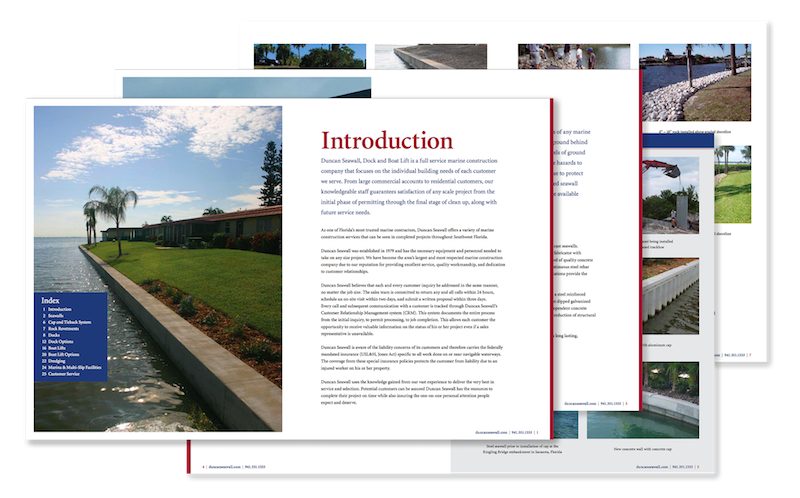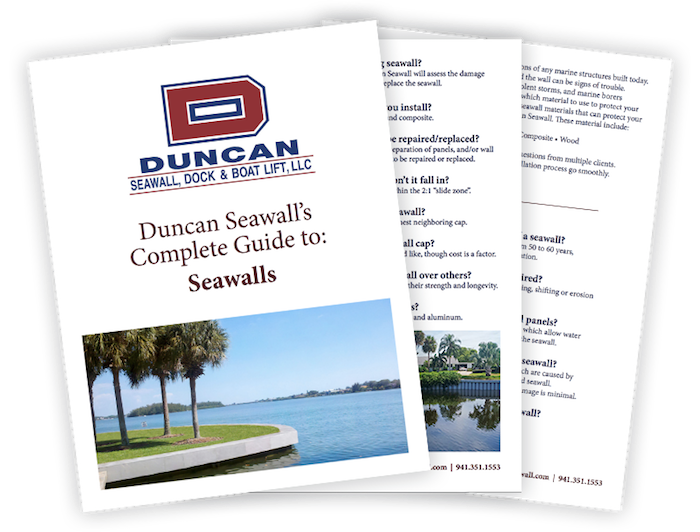Watch out for these signs of seawall erosion to make sure your seawall stays as strong as possible during storm season and against the everyday wear and tear.
Related Blog: Duncan Seawall Process to Reinforce a Failing Seawall
A Seawall's Purpose
The sole purpose of a seawall is to prevent the body of water your property joins from encroaching onto your land that will eventually lead to land erosion over time. The water's force during storms and hurricanes can quickly erode large sections of your property away. If you live or have a business adjacent to waterfront property, you want to protect your real estate investment.
Signs of Seawall Erosion
A failing seawall usually begins to show signs of erosion that you can address before you have a catastrophic situation on your hands.
Cracks
Cracks in the seawall cap are the most noticeable signs of seawall erosion. Just as land settlement causes cracks in cement slabs, land under water has more potential to shift.
Sinkholes
Sinkholes can be quite obvious too, but sometimes you discover a sinkhole when you step onto the ground that may be hidden by the landscaping, even grass. Sunken areas of your yard, especially near your seawall, needs attention.
A Bowing or Leaning Seawall
For steel seawalls, bowing or leaning are noticeable signs that your seawall is no longer protecting your property from eroding.
Structural Damage Noticed Away from the Seawall
If you're noticing structural damage around your pool or patio that is near your seawall, this may be a sign of seawall erosion. Something as simple as a few cracks at your patio's edge, closest to the seawall, could be your sign.
Landscaping Void Near Seawall
Something easy to ignore is when the ground at your seawall seems to have pulled away leaving a gap of space. It will look as if you dug a trench between the seawall and your lawn. This could be a sign of anchor corrosion.
Causes of Erosion
Whether you have waterfront property on a lake, a canal, or an ocean, our Florida storms and hurricanes cause damaging rains and waves that will, in time, affect your seawall. Not to mention the effects of flooding onto your property that saturates your property with excess water. Even overwatering lawns can cause a property's land to move and affect your seawall.
If you're in an area with a lot of new construction happening, your property's land may be affected. And possibly, this could weaken the stability of your seawall. While construction is not as likely to affect your seawall as the forces of nature, it is something to know.
Inspection and Maintenance of Seawalls
It is a good habit to check for seawall erosion, especially after major storms, and especially for aged seawalls. It is not always easy to know what to look for when everything looks good from what you can visually see. It is a good idea to hire a professional, at least once per year, to inspect your seawall.
As mentioned above, the anchors that are securing the seawall to the water's bottom can be corroding and allowing your seawall to shift away from protecting your property. Professional marine contractors are instrumental in inspecting the underwater parts of your seawall.
Duncan Seawall, Dock and Boat Lift, LLC: The Inspectors for Every Erosion Case
Once you make a seawall investment, inspect if yourself throughout the year. And, hire the Duncan team to inspect your seawall on an annual basis. The quicker we catch erosion, the better the outcome.
Unfortunately, we cannot control Mother Nature and her destructive hurricanes. There may be times when reinforcing with a new seawall is needed or total replacement.
No matter how small or how big a seawall problem you may or may not have, call Duncan Seawall, Dock and Boat Lift, LLC. We have been constructing, inspecting, repairing and replacing seawalls in Southwest Florida for decades, and we are dedicated to quality every step of the way.
If you want your investment to pay off in the long run, be sure to take very good care of your boat dock. The best way to ensure a long-lasting dock is to hire an experienced dock builder at the start. Once your structure is in place, there are a number of things you can do to extend the life of your dock.



